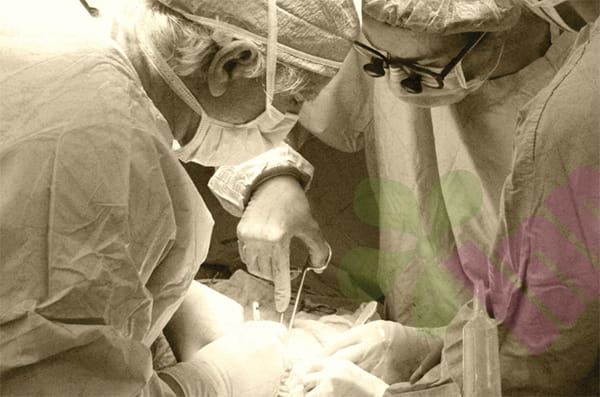After some major surgeries, such as radical mastectomy, gynecological tumor surgery, or orthopedic surgery involving lymph node dissection, the wound may continue to exude. This exudate is usually clear or light yellow, slightly viscous in texture, and different in color and flow rate from fresh blood. The wound may be accompanied by swelling, and the healing process is significantly delayed. This condition is medically known as lymphatic leakage.

Of lymph leakage :
The human body has a network of lymphatic vessels throughout the body. Lymphatic vessels are responsible for transporting tissue fluid, proteins, fats (especially those absorbed by the intestines), immune cells, and other substances. When the structure of the lymphatic vessels is damaged by surgery (especially the lymph node dissection area) or trauma, the lymph fluid inside will continue to seep out from the injury, accumulate in the wound, or flow out through the drainage tube.
Characteristics of lymphatic leakage :
Properties of exudate: The core characteristic is continuous, slow exudation of clear or light yellow, slightly viscous liquid.
Associated symptoms: Swelling (due to fluid accumulation) is common in the wound area. Long-term exudation may cause maceration, whitishness, or even damage to the skin around the wound.
Potential risks:
1. Hindering wound healing: A continuously moist environment is not conducive to wound closure.
- Increased risk of infection: Protein-rich lymph fluid is a favorable environment for bacterial growth.
- Nutritional loss: Long-term and large-scale exudate can lead to loss of protein and lipids.
- Patient distress: Prolonged wound healing brings a psychological burden to patients.
What should I do if lymph leakage occurs?
Patients should note that although lymph leakage may prolong the recovery period, in most cases it can be effectively controlled until healing through systematic medical care. Patients should minimize activity and take more rest in a sitting or lying position. Avoid strenuous exercise, prolonged drooping, or pressure on the affected limb. Raise the affected limb (above the heart level) when resting to use gravity to reduce the production and exudation of local lymph. Activity will significantly increase lymph circulation and aggravate leakage. Dietary management should strictly follow the "high calorie, high protein, low fat, low sodium" dietary principle. Long-chain fatty acids (commonly found in most edible oils and animal fats) need to be absorbed through the intestinal lymphatic vessels (lacteals), which will increase the burden on the lymphatic system and the production of lymph. Medium-chain fatty acids (MCTs) are different. They do not pass through the lymphatic ducts, but directly enter the liver through the portal vein and are rapidly broken down for energy (the absorption rate is about 4 times that of long-chain fatty acids). This can not only efficiently provide the energy and some nutrients required by the body, but also significantly reduce the production and leakage of intestinal lymph (lactoducts). Foods rich in MCT mainly include: cocoa butter, coconut oil, palm kernel oil, and other specific vegetable oils, as well as special foods made from them (such as MCT oil, MCT-containing formula milk, special nutritional supplements). Skim milk and its products are also relatively low-fat protein sources. Ensure that the drainage tube is unobstructed, avoid folding and pressure, and regularly observe and record the drainage volume and characteristics. Unobstructed drainage helps to relieve local pressure and create conditions for the self-repair of damaged lymphatic vessels.
Treatment: Medical staff will judge lymph leakage and its severity based on the characteristics and amount of exudate. Ensure smooth drainage: Effective drainage is crucial to avoid local fluid accumulation. If necessary, the drainage device needs to be adjusted or replaced. Alternatively, negative pressure wound therapy (NPWT) can actively absorb exudate, reduce tissue edema, and promote the growth of granulation tissue. Superabsorbent foam dressings are recommended for dressing selection. For persistent lymphatic exudate, this type of dressing has a strong absorption capacity, can quickly lock a large amount of exudate, keep the wound contact surface relatively dry, and reduce the risk of exudate irritation and maceration of surrounding skin. At the same time, they provide good buffering and protect the wound surface. The dressing needs to be changed in time according to the amount of exudate to prevent soaking. Under the guidance of a doctor, a moderate pressure bandage (such as an elastic bandage) on the wound area can help reduce lymph production and exudation and promote lymphatic closure. It is necessary to ensure that the pressure is appropriate and does not affect the blood circulation of the distal limbs.
The healing of lymphatic leakage usually takes several weeks, and some cases may take longer. It is essential to remain patient. Actively cooperating with the medical staff's treatment and care plan, and providing timely feedback on wound changes, are decisive for the ultimate success in controlling lymphatic leakage and promoting wound healing. For more information on Innomed®Super Absorbent Non-adhesive, refer to the Previous Articles. If you have customized needs, you are welcome to contact us; You Wholeheartedly. At longterm medical, we transform this data by Innovating and Developing Products that Make Life easier for those who need loving care.
Editor: kiki Jia

 English
English عربى
عربى Español
Español русский
русский 中文简体
中文简体








